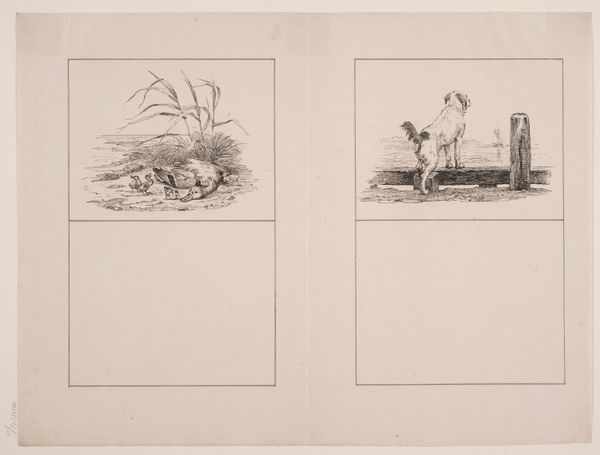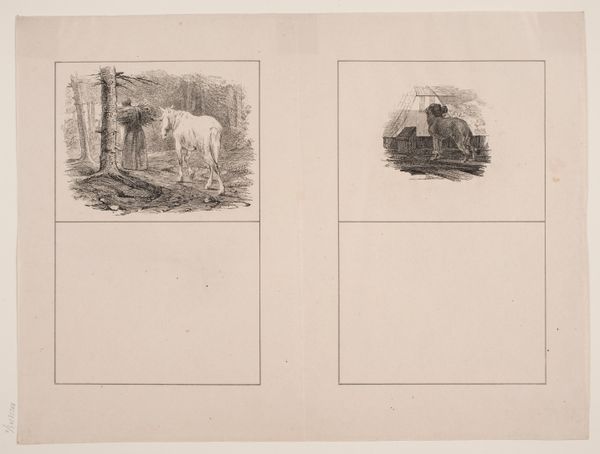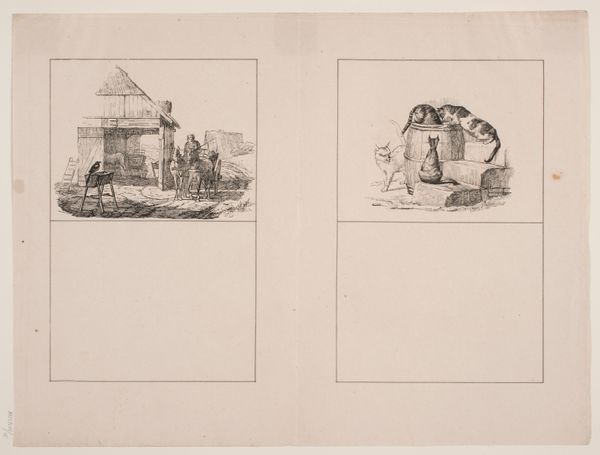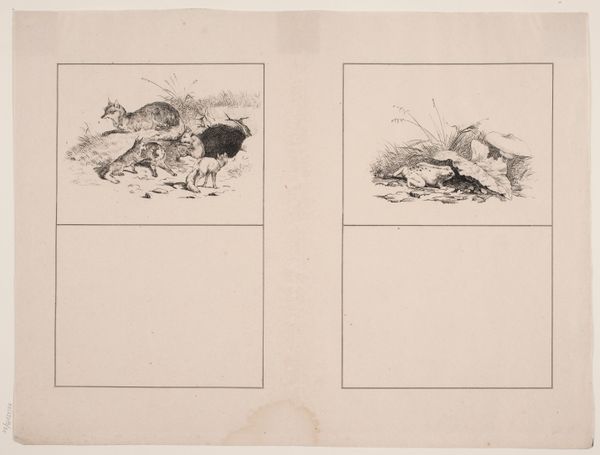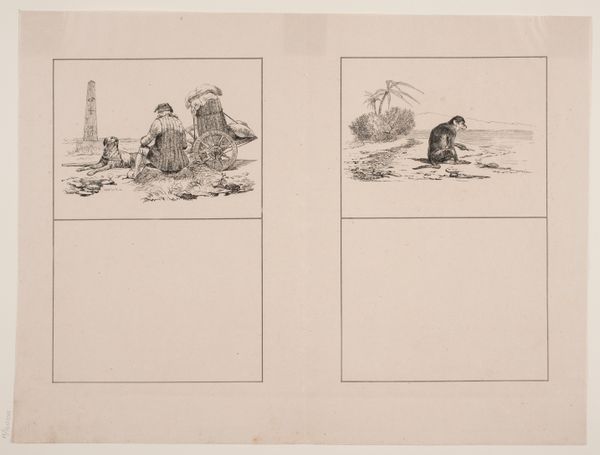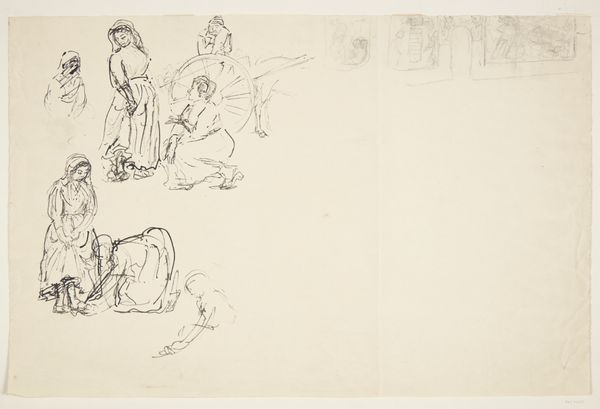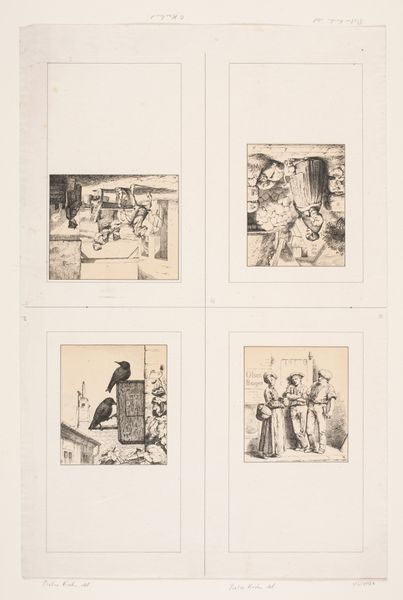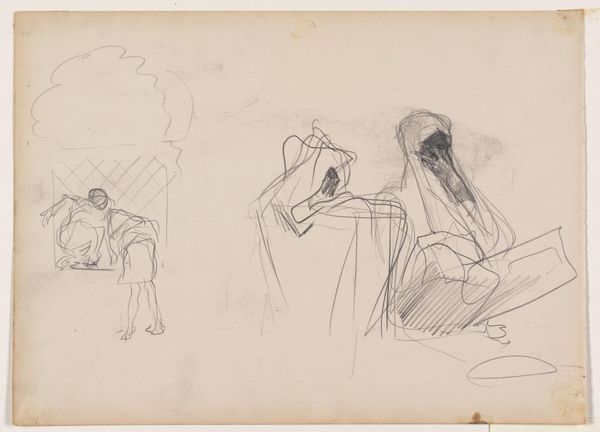
drawing, lithograph, print, etching, ink
#
drawing
#
ink drawing
#
lithograph
#
ink paper printed
# print
#
etching
#
landscape
#
etching
#
figuration
#
ink
#
genre-painting
Dimensions: 277 mm (height) x 362 mm (width) (bladmaal)
Curator: Adolph Kittendorff created this etching and lithograph, titled “Skaden og grisen; De to katte,” in 1845. The work features two distinct scenes arranged on a single sheet: one illustrating a pig and a magpie in a farmyard setting, and the other depicting two cats perched on a fence. Editor: It strikes me as quaint—almost like facing pages from an illustrated fable. The crisp linework, particularly in the details of the animals, feels quite precise, yet there's also a certain naivete. It feels grounded and evokes a simple, rural atmosphere. Curator: That aligns with its function and dissemination: such works served the market for accessible images. Prints like these made art available outside the elite circles typically associated with painting and sculpture, opening access to art to a broader public. The medium is so important. Editor: Right, lithography’s relative ease of production certainly democratized image creation. Formally, look at how the contrasting tonal ranges and textures create distinct moods in each vignette; notice the stark, graphic quality, emphasizing form and outline rather than deep shadow. Curator: Focusing on form ignores content; each section represents an element of rural life and speaks to contemporary class divides. The scenes depict common farm animals—their likeness rendered utilizing printing techniques available for broader audiences. I am also keen on exploring its symbolism within the context of 19th-century Danish rural life. Is there a message here about humans relationship to other creatures? Or an analogy with society and the artist? Editor: While context certainly matters, shouldn’t we also ask: how do these visual components shape our understanding and emotional response to the work? See how the lines coalesce to produce meaning: whether they signify status, allegory, or artistic ability; Kittendorff is shaping both image and ideology. Curator: I believe, ultimately, its importance lies in its accessibility and utility; by considering the artist's labor, the distribution networks, and the means of production we can fully appreciate the print's social and cultural implications. Editor: Agreed—and by examining those visual properties, we might even unveil deeper cultural nuances that history often obscures. Thanks to our conversation, I find a fresh fascination within those etched lines!
Comments
No comments
Be the first to comment and join the conversation on the ultimate creative platform.

